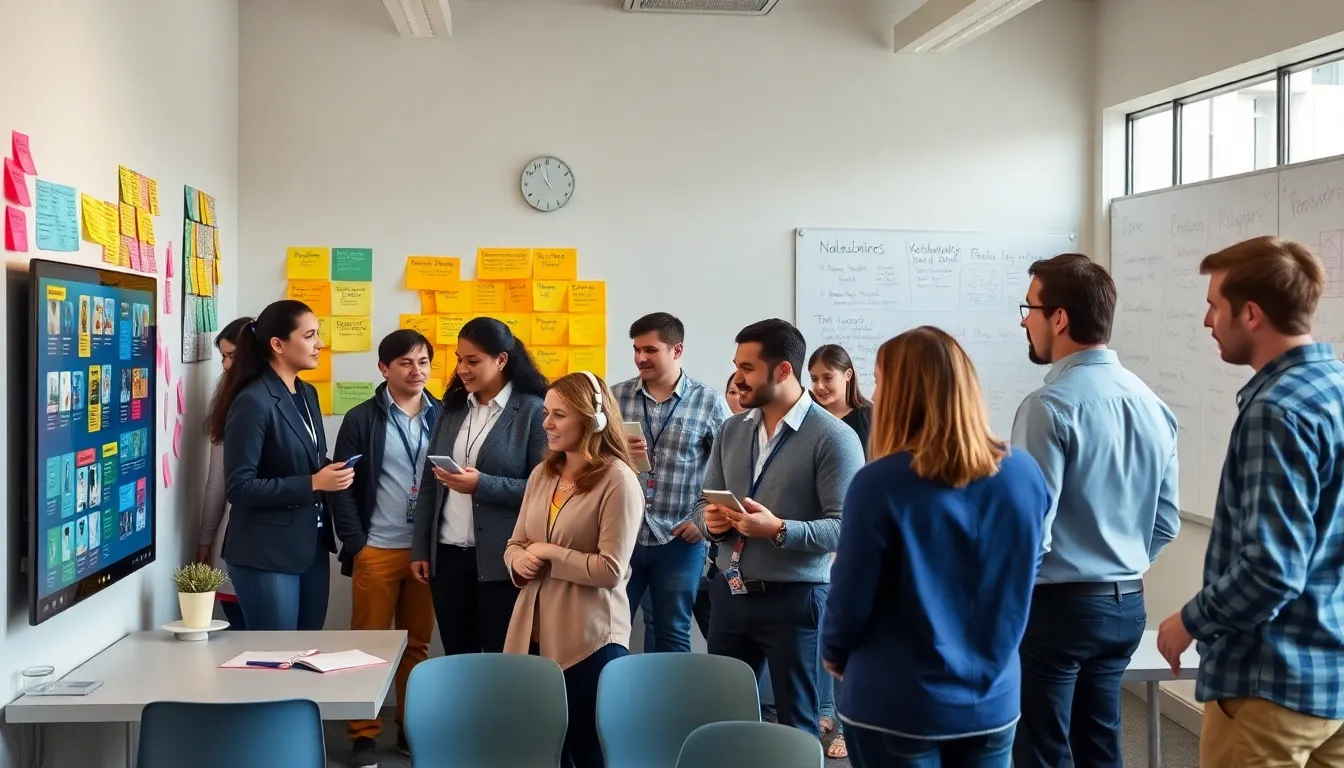Table of Contents
ToggleHave you ever wondered why some people seem to glide through language learning while others feel like they’re trying to sprint through molasses? Well, grab your notepad, because we’re diving into the exciting world of language learning techniques. Whether you’re trying to impress someone with your Spanish charm or simply want to order a coffee in Paris without sounding like a tourist, we’ve got the antidote. This comprehensive guide will take you through meaningful methods that can make your journey smoother, funnier, and decidedly more effective. Let’s embark on this linguistic adventure.
Understanding Language Learning Styles

Every learner is unique, and understanding that individuality is key to mastering a new language. Let’s break down the three primary learning styles:
Visual Learning Techniques
For those who find that pictures, diagrams, and colors make information stick, visual learning is the way to go. Imagine sticky notes plastered on your fridge with vocabulary words or infographics chronicling those pesky grammar rules. Supplementing a textbook with videos or flashcards can make them stick in the mind like avocado on toast. Colors and illustrations can paint a vivid picture in the brain, helping learners identify and retain new words.
Auditory Learning Techniques
If they resonate better with sounds, auditory learners thrive on listening. This could mean engaging with podcasts, audiobooks, or even catchy songs in the target language. The trick is to find these sounds and immerse oneself in them. Mimicking accents, repeating sentences, and even singing along can enhance retention, after all, who said learning can’t be fun?
Kinesthetic Learning Techniques
Hands-on learners approach language through movement and physical activity. Engaging in role-playing, flashcard games, or even writing on large whiteboards can stimulate their sense of touch. Interactive language classes that encourage speaking and physical expression reinforce learning on a muscle memory level.
Effective Study Strategies
Effective study techniques are golden keys to unlocking fluency. Here are two potent strategies to consider:
Spaced Repetition and Its Benefits
The secret sauce of memory retention lies within spaced repetition. Instead of cramming words and phrases into a single session, space them out. This technique maximizes recall and significantly reduces the chance of forgetting. Language-learning apps often use this method, ensuring that learners revisit challenging concepts at optimal intervals. It’s like watering a plant: too much at once can drown it.
Utilizing Flashcards for Vocabulary
Flashcards remain a favorite for a reason, they work. These handy little tools can transform daunting vocabulary lists into manageable bite-sized chunks. They can be tailored for specific topics, encouraging users to incorporate new words into their speaking and writing. The beauty lies in their simplicity: they can be made from homemade index cards or through apps that offer gamified learning experiences.
Engaging with Native Content
Diving into native content is like taking the plunge into the deep end of a pool: initially intimidating, but incredibly rewarding. Here’s how to do it right:
Conversations with Native Speakers
Nothing beats the real deal, conversations with native speakers. They can provide firsthand insights into cultural nuances and everyday language use. Whether it’s through language exchange sessions or tutoring, engaging in conversations allows learners to practice fluently and organically. Don’t shy away from making mistakes: they’re vital for growth.
Incorporating Media and Resources
Using native media, like films, podcasts, and books, is another fantastic way to immerse oneself. Watching shows with subtitles can help association skills while tuning into local music or radio stations exposes ears to dialects and slang. And who wouldn’t want to binge-watch their new favorite series while learning?
Technology and Language Learning
In this digital age, technology is a friend to every aspiring language learner. Here are some tech-savvy strategies:
Language Learning Apps and Tools
There’s no shortage of language-learning apps that cater to different styles and preferences, such as Duolingo or Babbel. These platforms gamify the learning process, using engaging quizzes and challenges to make it less about rote memorization and more about interactive enjoyment.
Online Courses and Platforms
Online courses have exploded in popularity, providing learners with diverse options to advance their skills from home. Platforms like Coursera or Rosetta Stone deliver structured lessons, often including videos and practice exercises to reinforce understanding. Live classes, webinars, and community forums further enrich the experience, creating connections among learners.
Building a Language Practice Routine
Establishing a routine is essential for steady progress in language learning. Here are two tips that can set learners on the right path:
Setting Achievable Goals
Small, realistic goals pave the way for steady improvement. Rather than aiming to be fluent in a month, focusing on learning a handful of words each day or mastering new phrases weekly can make a world of difference. Celebrate these little victories, every new word adds to the arsenal.
Tracking Progress and Milestones
Journaling or using apps to track progress can provide motivation and a sense of accomplishment. Whether it’s noting newly learned vocabulary or writing down conversation snippets, keeping a record can help reflect on growth over time. Plus, it’s incredibly satisfying to look back and see just how far one has come.




